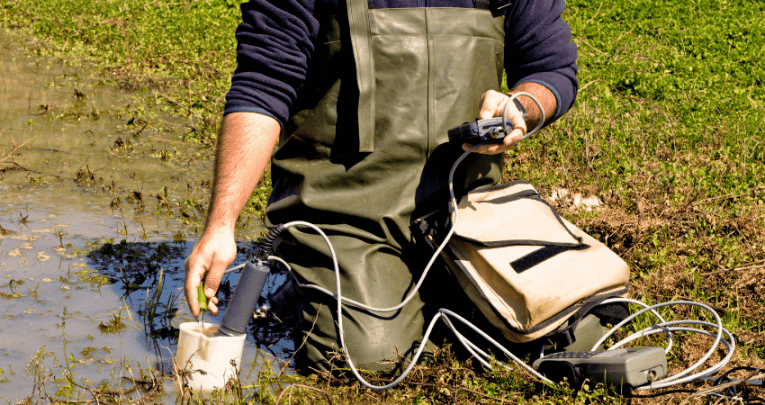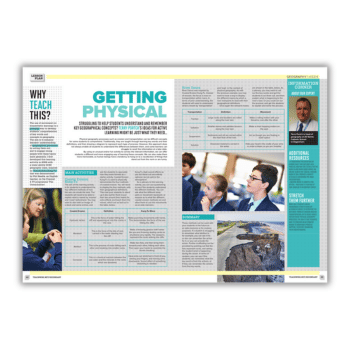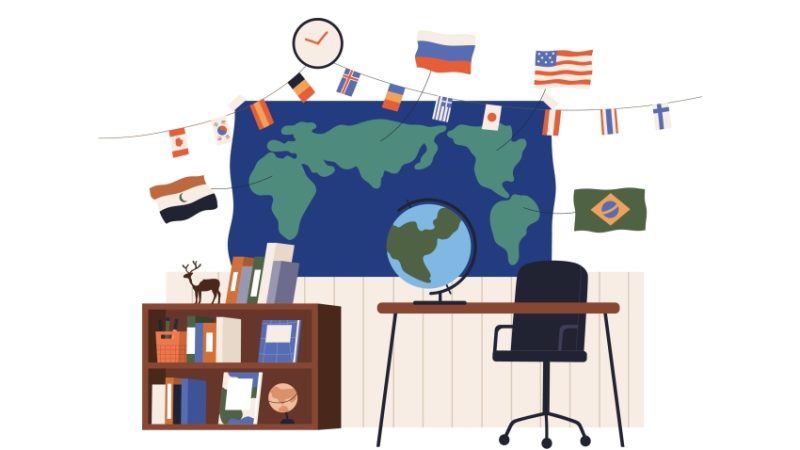Green Careers Week – Connecting geography with eco jobs

Explore how to incorporate Green Careers Week into your geography lessons and help students discover a range of career options in this vital area…

- by Steve Brace

Tomorrow’s economists, lawyers, planners and policymakers will all need a grounding in ‘green knowledge’. Using Green Careers Week as a focus in geography lessons is a great place to start this journey…
What is Green Careers Week?
Green Careers Week aims to raise aspiration, support diversity, challenge stereotypes, and promote real opportunities for young people to have a career that will genuinely make a difference.
It is a partnership between National Careers Week, STEM Learning and the DfE.
When is Green Careers Week?
Green Careers Week takes place from 4th to 9th November 2024.
How can geography teachers use Green Careers Week?
As a geography teacher, you can use Green Careers Week to strengthen the development of green knowledge and skills among your young geographers. You can also use it to draw out the essential contributions that our subject can make.
To help out, the Geographical Association has partnered with the Environment Agency to provide a range of resources that help connect the professional expertise of EA colleagues – who are currently managing and protecting the environment – with the geography classroom.
How to prepare students for green careers
Geography teachers often take pride in how their work supports young peoples’ environmental awareness. Correspondingly, many geography students will have their own individual interests in environmental issues.
Such interests may now be more important than ever, in a workforce where sustainable approaches and green skills will be needed to address the challenges that climate change presents for our economy, society and environment.
What are green careers?
But when we speak of ‘green skills’ and ‘green jobs’, what do we actually mean? There’s significant confusion and a number misconceptions around this developing area.
Research by Public First has highlighted very low levels of knowledge regarding the green sector and a lack of clear career pathways into it. Some people see green jobs as ‘a bit of a punt’.
The CBI has additionally found that educating the public about net zero remains a ‘huge task’ – without which, it believes, people will be less likely to choose careers in the sector.
What we do know is that there’s strong public support for geography’s contribution to green skills. According to YouGov polling, 70% of all UK adults agree that young people need to study geography to prepare them with the skills and knowledge needed to work in ‘green jobs’.
However, geographers might do well to consider how effectively our subject connects lessons learnt in the classroom with young peoples’ views about their career prospects.
When asked about the factors influencing their subject choices in relation to their future careers, 51% of young people said it was to ‘Earn a good salary’. This contrasted sharply with the 14% of young people seeking careers in which they could help address environmental or social concerns.
Questions to ask
We in the geography community might therefore want to reflect on:
- Whether we’re being explicit about the contribution of green knowledge and skills to the workplace
- How these can also underpin careers in well-paid jobs
- How we can promote the study of geography as a way of supporting this
- Whether we present studying geography as a steep pyramid leading only to more geography at A Level and university, rather than something pupils can take with them into relevant vocational courses or apprenticeships
These are timely questions, given the government’s independent review of the National Curriculum, and Green Careers Week.
Teaching green skills in geography
So where might we find green knowledge and skills in the geography classroom? One way might be to present geography as adopting an ‘integrated systems’ approach to the human and physical worlds.
A key strength of the subject is how it enables young people to understand the ways in which interactions between people (human geography) and the environment (physical geography) shape and change places at different scales.
This distinctive geographical approach is central to understanding how, for example, climate change will transform the Earth’s economies, societies and environments at a local, national and global scale in the years to come.
Trending
Charting the implications
We can also connect the science of climate change with its implications. This is because geography provides the evidence for how our climate has, and will change.
This includes teaching about the scale of anthropogenic carbon emissions and their impact on global warming. It also includes teaching about how well (or not) countries are working towards net zero emissions, so that global warming can be limited to 1.5°C above pre-industrial levels.
The implications of climate change will be profound. In the UK, for example, it could lead to a 61% increase in the number of people across the country facing risks of flooding. At a global scale, flood risks will extend far beyond the 1.8 billion people who face them currently.
Fieldwork enquiries
Another potential avenue is to pursue fieldwork enquiries based on environmental interactions. As summer heatwaves become more common, a geographical enquiry into microclimates could reveal the impact of heat stresses on your school’s buildings.
The temperatures of different surfaces can be easily measured with an infrared thermometer (which only cost around £15). This allows pupils to investigate the cooling effects of shade, and how playground surface coverings can become extremely hot.
The Royal Meteorological Society, for instance, has previously recorded the summer temperature of a school’s astroturf as reaching well over 40°C!
Or consider geospatial analysis of landscapes. Geographers’ use of geospatial technology is essential for enabling young people to better understand key environmental considerations in different locations at different scales. This might involve:
- analysing green spaces in urban areas
- tracking wildfires as they occur across the Mediterranean
- identifying suitable sites for new housebuilding
- mapping the biodiversity of your school grounds
Whether delivered in the classroom or during geography fieldwork, developing students’ abilities to use geospatial technology parallels the work currently being undertaken by the Turing Institute and Geospatial Commission.
They are using it to better plan how land can be used to support prosperity, while protecting the environment and adapting to climate change.
Fundamental changes
As well as being more explicit about the green knowledge and skills pupils stand to gain from studying geography, we may also need to more upfront about the size and scale of the green economy itself. This can sometimes come across as a ‘Nice to have’, rather than an economic necessity.
Right now, for example, the UK is pursuing a national ambition to create 2.5 million green jobs by 2030. A fundamental change of that magnitude will require employees who are ready to apply green knowledge and skills to a wide range of careers.
This will include environmental monitoring and protection, yes. But it also involves:
- assorted legal and financial services
- jobs within logistics and supply chains
- land management and planning roles
- business leadership and marketing expertise.
A number of the new government’s ambitions seem to connect directly with expanding green opportunities.
The transition to clean power, for one, will call for geospatial expertise in order to locate renewables in suitable sites that can balance energy demands against restrictions put in place to protect vital landscapes.
Similarly, plans to make London the world’s capital city for green finance will need traders with the knowledge and skills to provide sufficient returns for a whole series of bottom lines, both financial and those depending on sustainability.
There are significant opportunities available for helping young people chart their own pathways into careers which will be individually rewarding to them, and of huge benefit to us all. And this work starts in the geography classroom,
Steve Brace is chief executive of the Geographical Association. Follow GA on X at @The_GA.










